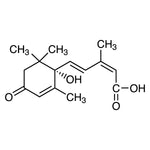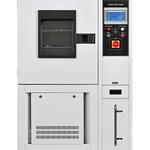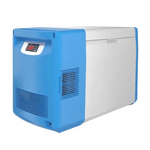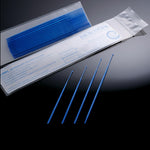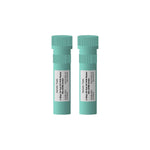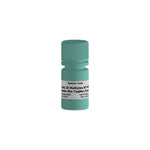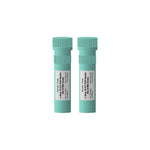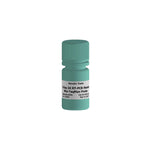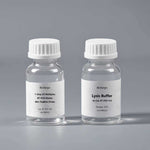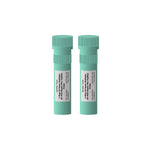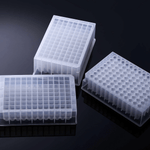You have no items in your shopping cart.
Introduction: The Rise of an Unexpected Biomarker
Torque teno virus (TTV), a highly prevalent single-stranded DNA virus discovered in the late 1990s, was long considered biologically insignificant. For decades, the virus attracted limited attention: it caused no clear disease, circulated silently in nearly all populations, and presented extreme genomic diversity that made standardized research challenging.
However, over the last decade, TTV has shifted from an obscure virological curiosity to one of the most actively investigated biomarkers for immune monitoring. This shift is driven by accumulating evidence that TTV viral load behaves as a dynamic indicator of host immune competence—offering a new lens through which to interpret immune suppression, immune recovery, and host–pathogen interactions.
As the demand for precision immunomonitoring increases in transplantation, oncology, critical care, and infectious diseases, TTV is poised to become an important tool in both basic and applied research.
TTV Biology: From “Harmless Passenger” to Immunological Indicator
A ubiquitous virus with no known pathogenicity
TTV belongs to the family Anelloviridae, a group of small, non-enveloped, circular ssDNA viruses characterized by:
-
Extremely high global prevalence (70–100%)
-
Chronic, lifelong persistence
-
Multiple co-circulating genotypes
-
Stable presence even in healthy individuals
-
Absence of well-defined pathology
The combination of ubiquity and non-pathogenicity initially positioned TTV as a “virome background signal”—a natural feature of the human microbial ecosystem.
A virus tightly linked to immune activity
More recent research has revealed a striking property:
TTV viral load fluctuates in response to host immune function.
-
Immune suppression → TTV expands
-
Immune recovery → TTV contracts
This behavior reflects the virus’s dependence on host immune surveillance for replication control. It also suggests that TTV may act as a real-time “readout” of immune balance—something traditional biomarkers often fail to capture.
Why TTV Matters: Limitations of Current Immune Monitoring Approaches
Modern immune monitoring relies on markers such as:
-
Lymphocyte counts
-
Cytokine panels
-
Drug trough levels
-
HLA typing and donor-specific antibodies
-
Flow cytometry–based immune phenotyping
While valuable, these approaches have limitations:
| Limitation | Explanation |
| Static | Snapshot values may not reflect real-time immune fluctuations |
| Indirect | Many markers measure downstream effects rather than immune competence |
| Costly | Multi-parameter immunology assays can be expensive |
| Complex | Requires specialized platforms (flow cytometry, ELISA, multiplex panels) |
| Variable | Results depend on timing, patient status, comorbidities |
In contrast, TTV viral load responds dynamically, continuously, and reflectively—offering a biomarker that captures the functional state of the immune system rather than isolated signals.
This explains why TTV is gaining attention across multiple disciplines.
Research Applications: Where TTV Is Making an Impact
1. Transplantation Medicine
Among all fields, transplantation research has shown the strongest interest in TTV.
Why?
Post-transplant management depends on achieving the delicate balance between:
-
Preventing rejection (requiring immunosuppression)
-
Avoiding infections (requiring immune competence)
TTV offers a potential surrogate marker for this balance. Studies report that:
-
High TTV levels are associated with strong immunosuppression
-
Low TTV levels may correlate with rejection risk
-
TTV dynamics reflect how patients respond to immunosuppressive regimens
As a result, TTV quantification is increasingly considered in personalized immunosuppression strategies.
2. Oncology & Hematology
Cancer therapies—including chemotherapy, stem cell transplantation, CAR-T therapy, and checkpoint inhibitors—profoundly reshape immune function.
TTV is being evaluated as a marker of:
-
Immune reconstitution after HSCT
-
Lymphocyte depletion and recovery
-
Risks associated with neutropenia or lymphopenia
-
Immune overactivation in the context of immunotherapy
Its stability and responsiveness make it attractive in longitudinal oncology research.
3. HIV and Immunodeficiency Disorders
In HIV research, TTV is emerging as a complementary immune recovery marker.
-
TTV load decreases as antiviral therapy restores immune function
-
It may provide a finer-grained picture than CD4/CD8 ratios alone
-
It reflects immune activity even when viral suppression is achieved
TTV may help distinguish between immunological and virological recovery trajectories.
4. Critical Care and Sepsis
ICU settings exhibit complex immune dysregulation:
-
initial hyperinflammation
-
followed by potential immune collapse (“immune paralysis”)
TTV dynamics may help identify:
-
high-risk sepsis patients
-
susceptibility to secondary infections
-
immune exhaustion states
As personalized critical care evolves, TTV could support risk stratification models.
5. Veterinary & Comparative Virology
TTV-like viruses are found in many mammals, including pigs, cattle, and primates. They provide a window into:
-
viral ecology
-
host–virus coevolution
-
cross-species transmission
This makes TTV relevant in comparative immunology and xenotransplantation research.
The Market Perspective: Why TTV Detection Is Growing Quickly
Several factors are pushing TTV quantification toward mainstream research adoption:
1. Rapid expansion of immunotherapy & transplant markets
Global markets for:
-
cell and gene therapies
-
solid organ transplantation
-
immunosuppressive drugs
-
antiviral treatments
…are expanding rapidly. These fields require better immune monitoring tools.
2. Increasing focus on personalized immunosuppression
Traditional drug-level monitoring (e.g., tacrolimus) does not fully predict immune competence.
TTV could support:
-
personalized dosing
-
predictive risk models
-
improved patient management
3. Growth of clinical virome studies
The human virome is now a major focus in microbiome science. TTV is one of its most quantifiable components.
4. Practical advantages of qPCR-based monitoring
qPCR is:
-
widely available
-
cost-effective
-
scalable
-
well-validated
Making TTV detection accessible to most research institutions.
Challenges and Future Directions
Despite its promise, TTV faces several challenges:
-
Genomic diversity: standardizing universal primers/probes is difficult
-
Inter-individual variability: baseline viral loads differ widely
-
Undefined causality: correlation with immune function is strong, but mechanistic links remain unclear
-
Translational barriers: TTV is not yet validated for clinical decision-making
Future research is focusing on:
-
integrating TTV into multi-omics immune profiling
-
defining genotype-specific behaviors
-
developing predictive algorithms using TTV kinetics
-
evaluating TTV as an endpoint in clinical trials
TTV is unlikely to replace existing biomarkers but is well-positioned to complement them.
Conclusion: TTV Is Moving From Curiosity to Utility
Torque teno virus represents a rare example of a biological signal that is:
-
ubiquitous
-
non-pathogenic
-
dynamic
-
quantifiable
-
functionally linked to immune competence
As immunology, virology, and precision medicine continue to converge, TTV may serve as a practical and scalable tool for insight into host immune activity.
Its rising presence in research publications, grant proposals, and diagnostic development pipelines indicates that TTV is transitioning from a scientific curiosity to a meaningful immunological biomarker with real-world research value.


